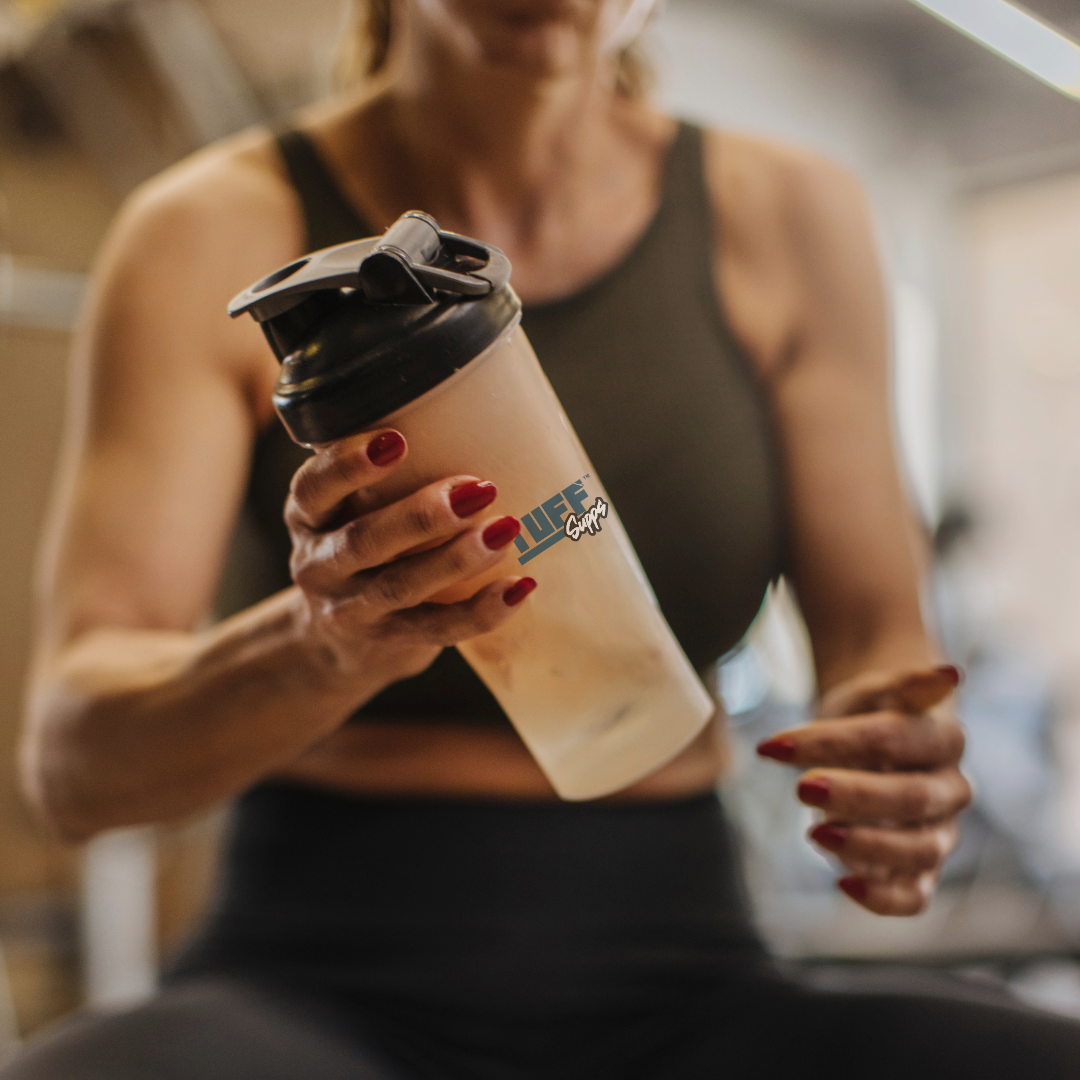In the quest for better fitness, health and overall well-being, many of us are learning that we just aren’t getting enough protein in our diet and so many individuals turn to whey protein as a powerful dietary ally. But with the abundance of options on the market, selecting the right whey protein product can be a daunting task. This is where our guide comes to the rescue. "Before You Buy Whey Protein: 10 Must-Know Tips for a Smarter Choice" is your comprehensive roadmap to navigating the world of whey protein supplementation. Whether you're a seasoned athlete or just beginning your fitness journey, understanding these essential tips will not only help you make an informed choice but also ensure you're maximising the benefits of this nutritional powerhouse. Join us as we unravel the secrets behind selecting the perfect whey protein for your needs, goals, and lifestyle. Don't forget to check out our whey protein range, available online.
10 Must-Know Tips for a Smarter Choice
1. Know Your Whey
Protein powders are a popular type of dietary supplement that is readily available in grocery, health, sports supplement/ nutrition, and online stores. The most common are whey-based powders (although there are plant-based options as well as speciality products such as collagen) – which traditionally were primarily used by fitness enthusiasts and bodybuilders to increase strength and athletic performance. Modern research has now also shown the many benefits of whey protein in all areas of health and well-being.
There are three types of whey protein powder - concentrate, isolate and hydrolysate. And because these three protein types have similar characteristics and are often blended in whey protein products, deciding which of the three is best to go for can be quite confusing.
Concentrate has some fat and lactose, isolate has minimal fat and lactose, and hydrolysate is pre-digested (protein molecules broken down further) for easier absorption. As in many cases with nutrition and supplementation, it depends on your goals and your individual body. You really can’t place one whey above the other. This is because there is no conclusive study that categorically states that one type of protein powder is more effective than the other at present. As a general rule of thumb though, if you are someone who has some adverse reaction to milk products (e.g. bloating) then whey products like isolate and hydrolysate have only trace amounts of lactose and so will be the most gentle on your tummy. If lactose or milk allergies are not an issue for you, whey concentrate has a richer and creamier taste and is a more cost-effective option than isolate and hydrolysate.
It is important to remember that despite the various claims made by different brands, studies have found that there are no significant differences in benefits between the different whey products. Except for elite athletes, for many consumers there won't be a noticeable difference between the different whey products in terms of benefits. What studies have shown though, is that whey protein does provide massive benefits to health, wellbeing, performance, and recovery.
If you would like to know further details on the difference between the different whey proteins check out our article below.
* Note that another common dairy related protein is Casein protein powder. Casein is the other protein which along with whey, makes up the protein found in milk. Casein is not a whey protein with one difference being casein takes longer to digest and so is more of a speciality protein. Most people choose to use whey protein as their main supplement for its easy digestion and muscle recovery benefits. Casein can easily be used in conjunction with whey protedairy-relatedin.
2. Know Your Goals
Understand your fitness or dietary goals. Whether you're looking to build muscle, lose weight, or just increase your protein intake, knowing your objectives will help you choose the right product. Are you looking for athletic performance improvements? Then whey isolate or hydrolysate may be your choice. Looking for general health and wellbeing benefits? Then whatever product sets your taste buds on fire may be the way to go. Or maybe you’re just looking for a quick, easy and cost-effective option to keep your protein intake up while leading a busy lifestyle? In this case, whey concentrate may be a great option for you.
If you have specific dietary needs or fitness goals, consider consulting with a healthcare professional or a nutritionist for personalized guidance on which whey is best for you.
3. Read the Ingredient List
Ingredient lists are very important to read and understand when comparing whey products. Again, what you want in an ingredients list is dependent on your goals and needs, however, a good rule of thumb is to remember that the more ingredients that are listed that are not actual whey protein, the less actual whey protein you are getting per serve. Thus, the lower the actual protein content you are getting per serve. As whey protein is the key ingredient in any whey protein product, you want to maximise the amount you are getting for optimum benefits.
Other things in an ingredients list to be mindful of are that it contains minimal additives, fillers, and artificial ingredients. In general, good protein content for flavoured whey concentrate is generally 80% protein and 20% carbohydrates and fats, while flavoured whey isolates and hydrolysate is generally 85%. If your goal is purely to obtain the benefits of whey protein then the safest method is to choose a product with a short, recognizable ingredient list.
Some products also have other amino acids such as Glutamine added or supplements such as Creatine Monohydrate added. While these may have benefits that are in line with your goals, note that the addition of amino acids will increase the protein content per serve, but that the actual amount of whey protein present will be less.
If your goal is more along the lines of a meal replacement shake, then your ideal ingredients list ill be different as you will be looking for minerals, vitamins and other nutritional supplements along with whey. Note though that the addition of these ingredients will mean less overall whey protein per serve.
4. Protein Content
Look for a product with a high whey protein content per serving, typically around 25-30 grams per scoop. This ensures you get a significant protein boost with each serving. As noted above, beware of the addition of additional amino acids to the product, as these will reduce the amount of the key ingredient, whey protein, while making the protein content per serve higher.
5. Check the Serving Size
How many serves per container? How many scoops is a serve? These are important questions so you can establish value for money and how long a container will last. First, estimate how many times a day you think you will use the product? Generally, once or twice a day is the norm, so 30 servings would last you somewhere around 4 weeks or so with 1 serve being equal to 1 scoop. A 2 scoop serve may only work out to be 15 servings per container and so would last roughly two weeks which means you would need to be buying two containers a month on average, as opposed to just one. Often, a cheaper product will be smaller in size and so will cost you more in the long run.
6. Energy Per Serve
Calories or kilojoules per serve can vary greatly amongst whey protein products, as extra ingredients, flavours, and sweeteners can all effect the overall Cal/ Kj per serve of the product. Again, how many Cal/ Kj per serve you would need is dependent on your goals and requirements. For a weight loss goal, you may be looking for a relatively low energy per serve while for muscle gain you may be wanting a higher amount of energy per serve. Generally, whey concentrate based products will have a higher energy per serve due to having more lactose and fat whereas whey isolate will have a lower energy per serve as it has less lactose and fats.
7. Allergen Information
Check if the product contains any allergens that you may be sensitive to, such as gluten, soy, or lactose. Select a product that aligns with your dietary restrictions or allergies.
8. Try Before You Buy
Experiment with sample packs or small containers to find a flavour you enjoy. It's important that you like the taste, as this will make it easier to incorporate into your routine. Texture and consistency is also an important consideration and can vary amongst products and ingredients.
9. Artificial Additives
Be cautious of products with excessive added sugars and artificial flavours. Choose protein powders with minimal added sugars and natural flavourings.
10. What Do You Want to Use It For?
Determining the main purpose, you are thinking of using a whey product for is also an important factor in determining which is right for you. For example, if you are mainly considering using a whey protein for water-based shakes, then taste and texture may have a different meaning for you then if you are mainly planning to mix it in with your oats or yogurt. If you are mainly planning on using a whey product for cooking or adding to a smoothie, then an unflavoured variety may be best for you. Again, it is best to experiment with different flavours and concentrate/ isolate blends or standalone products to see what best suits you.
Always remember that whey protein powder should be a supplement to your diet and not a replacement for whole food sources of protein. It's best used to meet your protein goals when dietary intake falls short. If you have specific dietary needs or fitness goals, consider consulting with a healthcare professional or a nutritionist for personalized guidance.

